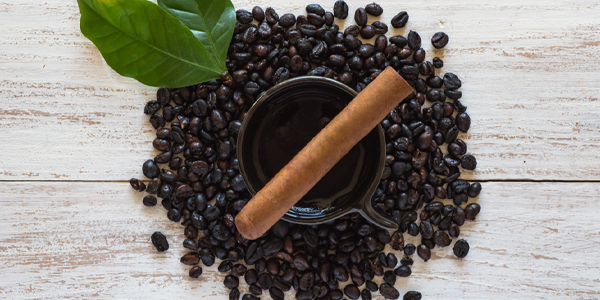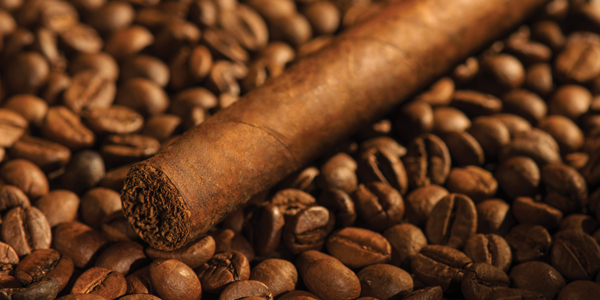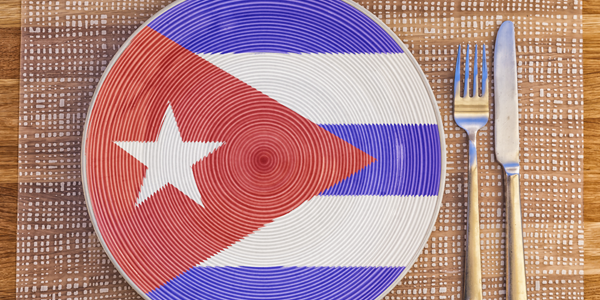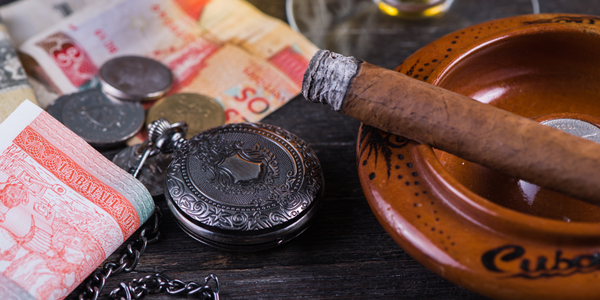Cuban Cigars & Coffee Pairings to Try
I’ve had a lot of coffee in Cuba. I have had two good coffee experiences in Cuba. One of those was at the La Casa del Habano in the Miramar neighborhood of Havana. I’ve decided, in hindsight, that I was overly generous in my assessment of the quality of the cafecito – what Cubans know as a short espresso – there. Each time I went, I smoked a cigar with the espresso-like liquid. The pairing of, say, a Bolivar Belicoso with this coffee just made the short cup better. By itself, the coffee was not so good. Personally, I find coffee roasted in Cuba generally to be burned, or over-roasted.
Our quest here is to offer pairings of some of your favorite Cuban cigars with Cuban coffee. The problem is that you’re not likely to be able to experience coffee in Cuba on a regular basis, so I’ve expanded the scope to include coffee that’s made in the Cuban style and available online. Some are available in similar roasts that you can buy in cans. Another one is made in the style of some Cuban coffee shops.
Cuba’s Coffee: A Short History
The coffee beans grown in Cuba today, almost all of it in the Sierra Maestra Mountains in the eastern part of the island, somehow arrived in Cuba from Ethiopia. Coffee cultivation in Cuba is attributed to a migration of French farmers from Haiti. They were fleeing that country’s revolution. Sound familiar?
In its mid-1950s heyday, Cuba produced more than 20,000 metric tons (more than 44 million pounds) of coffee beans. After the Castro revolution, and the nationalization of the coffee industry, coffee production slowed significantly. The end of the Soviet Union expedited the decline. Cuba’s coffee production reached a nadir around 2007-2009, during the worldwide “Great Recession.” Cuban-grown coffee once rivaled Cuban cigars as a major export. Today, coffee is an insignificant export, and Cuba even imports 8,000 metric tons from Vietnam. Cuba is hoping to produce 15,000 metric tons of coffee in 2020, far short of the estimated domestic demand of 24,000 metric tons. Under rationing, Cubans themselves get a few ounces of coffee every month. Little wonder it’s mixed with chickpeas and heavily sugared, usually made in a moka (stovetop) pot. At the coffee windows prevalent in Havana, a short espresso will generally cost one Cuban peso, a few cents in U.S. currency.
The Best Coffee in Havana: Pair It With a Strong Cigar
Okay, the second good experience with coffee that I had in Cuba was not at a cigar store, but more recently at Café El Escorial in Old Havana. El Escorial, in an old building, provides a very nice setting in the Plaza Vieja. Just go to the blue canopies. The décor, equipment – including a modern commercial espresso machine – and menu take their cue from the kind of coffee shop that Starbucks has made popular, including the offer of coffee beverages with rum and whipped cream. You can get a straight shot or double shot of espresso, and IT. IS. STRONG. If you do like your coffee that powerful, you’ll probably still want to add some sugar to the one El Escorial serves. All their beans come from the Escambray mountains in the central part of the island, from small growers, except when there are no Cuban beans available and the café subs in some Italian coffee. Viva la Revolucion!
PAIR WITH: I’d recommend a Cohiba Esplendido, a Churchill, 47 x 7, if you’re going to be in Cuba soon and drinking any of its strong, overly sugared coffee. The Esplendido is smoking very well these days and is stronger than the Siglo line. It’s going to cost you between $25 and $30 in Cuba, and more elsewhere. This is a cigar with unusual, for Cubans, power and complexity. There’s a lot of caramel and fruit coming through. I’m always wary of this vitola due to its history of being plugged, but lately they’ve drawn well.
Cuban Sock Coffee: Yeah, It’s a Thing
This is more a method than a type of coffee, unless you want to classify it as a drip. This is not exclusive to Cuba, as it is popular in rural settings in many nations where coffee makers or stoves just aren’t prevalent. I’ve also seen it in Mexico, Singapore, and Malaysia, to name a few. You really just need a heat source – an open fire will do – water, ground coffee, a container and, yes, a sock. Preferably a 100 percent cotton athletic sock. You don’t want any synthetics here, as any plastic will melt.
The method is simple. The sock essentially acts as the coffee filter, though this one is washable and reusable. In the first-world, the sock has been replaced by a cloth strainer with a handle, but in Cuba’s countryside, especially in the coffee-growing areas, you’ll see this done. First, you need ground coffee. How strong you want to make it is all up to you. You put the grounds in the sock. You put the sock inside a cup or pot, then pour hot water into the sock and let it sit for a few minutes. When you’ve got the potency you want, you remove the sock with tongs or a wire hanger.
Let’s assume, if you’re in Cuba, that the coffee being used is Cubita, the most popular Cuban brand. (A kilo bag of beans will cost around US$15.) The coffee is roasted to be pretty strong, but easily mellowed with sugar and/or milk. You’re more likely to get an American-sized cup of this and it’s smart to think of it as an americano coffee that you’d get at a US coffee shop.
PAIR WITH: You certainly have many options here depending on the strength of the coffee and whether you’ve used sugar or milk, but let’s assume you’ve left it fairly strong. I’d go with a favorite here, the Partagás Serie D No. 4. The D-4, as it’s commonly known, is a Robusto, 50 x 4.875, has a gorgeous reddish-brown wrapper and is rich from the start. There’s significant earthiness and some bold coffee notes of its own. You’ll also get notes of salty nuts, some honey, and woodiness. It’s about $30 a stick in the free world. I’m not sure what it goes for in Cuba these days, as I couldn’t find it last time I visited.
The Other Cuban Coffees
As mentioned, you’re not likely to be spending a lot of time in Cuba, but you can get that Cuban coffee flavor at home. Now that you know the two principle methods (moka pot and sock) Cubans use to make their coffee, you can do the same in your own kitchen.
Many coffee companies are now making a “Cuban” style coffee and some of the traditional outside-of-Cuba Cuban coffee brands have begun offering whole beans. If you want to grind your own (and I would wholeheartedly recommend you do this), then Bustelo’s Supreme Whole Bean Espresso is the one to buy, about $15 per pound. Bustelo is the leader in Cuban households outside of Cuba, though it has traditionally been available in cans or bricks, already ground. The advantage of getting the whole bean is that you’re going to be able to control the coarseness of the grind and, as a result, the strength of the coffee. You can easily grind this to work with your super-automatic espresso machine. I think the coffee made from whole-bean Bustelo is superior to the one made from already ground beans. For me that means that it’s not quite as harsh and acidic, dare I say sour. Frankly, I think this style is better with a little milk, as a café con leche (translation: coffee with milk).
To be fair, there are several other Cuban-style brands you should consider, most of them are offered only as ground coffee, but for much less (about $3.00+ p/lb.) than their whole-bean versions. Café La Llave and Pilon, even a relatively more complex Chock Full O’ Nuts Cuban Roast, would be worth checking out. None of these is as over-roasted as the coffee in Cuba, but they don’t lack strength.
PAIR WITH: Here’s where I want some spice, more than I want strength. This is especially true if you’re going the café con leche route, or drinking a cortadito, the Cuban version of a macchiato (coffee with milk foam). I choose a Vegas Robaina Famoso here. It’s a medium-strength Robusto, 48 x 5, with a ton of complexity and enough spice to stand up to the coffee, though it has some of its own tinges of cocoa and cream. Get it for around $27 outside of Cuba.
Brown Sugar, You Make It Taste So Good
I am not partial to heavily sweetened coffee, but once, in Chicago, I was intrigued by the way La Colombe Coffee Roasters was making a daily special I’d previously had only in Cuba, but this time with brown sugar. I think La Colombe called it “The Havana.” Anyway, it’s quite tasty and it’s also good iced, and you can make it at home. In Cuba, in some places where they made the espresso with an Italian machine, the coffee grounds were put in the portafilter (the basket containing the coffee grounds) and then white sugar was put on top of the grounds. The water went through the mix, automatically sweetening the coffee. Meh. But at La Colombe, replacing the white sugar with good quality brown made all the difference. The caramel nature of brown sugar infused the coffee. Not for every day, but it’s a great dessert and the sweetness certainly compliments a cigar.
PAIR WITH: Here’s where you want the classic, the iconic, the usually tasty Montecristo No. 2, a Figurado, 52 x 6.125, that goes for nearly $40 each. (They don’t get LESS expensive!) This Torpedo is medium-strength, but among the most complex Cuban cigars you can smoke. Lots of clearly defined nuts, chocolate, leather and woodiness come through and go nicely with the caramel in the coffee.
That’s Cold, Man
I thought it would be useful to include a cold coffee in this mix. You can certainly make this with Cuban coffee, but it’s Italian by birth. You’ll usually find it at illy’s coffee shops around the world. The way to make a Shakerato (pronounced, shaker-ah-toe) is to shake together a shot or two of espresso and simple syrup with ice cubes in a cocktail shaker, then pour the frothy mix through a strainer into a martini glass (or any glass). Delicious. Add booze to, you know, make it more adult.
The thing is, illy’s version, if I recall correctly, pours the concoction over shaved ice. You take a sip and then you just want to keep drinking. It’s an extraordinarily effective thirst-quencher. And it goes great with just about any cigar.
PAIR WITH: Hoyo de Monterrey Epicure No. 2. This was an easy selection because it’s one of my favorite cigars and it’s the one I had with the most recent Shakerato, or four, that I consumed. Just perfect. The Epicure No. 2 is a Robusto, 50 x 4.875, and a very expensive $30+ in London. The draw on this Cuban is exemplary and the flavors of brown sugar, raisin, a little chocolate and wood come through nicely. The finish is nutty. You’re going to love this combination. If you don’t, pass it over here.







